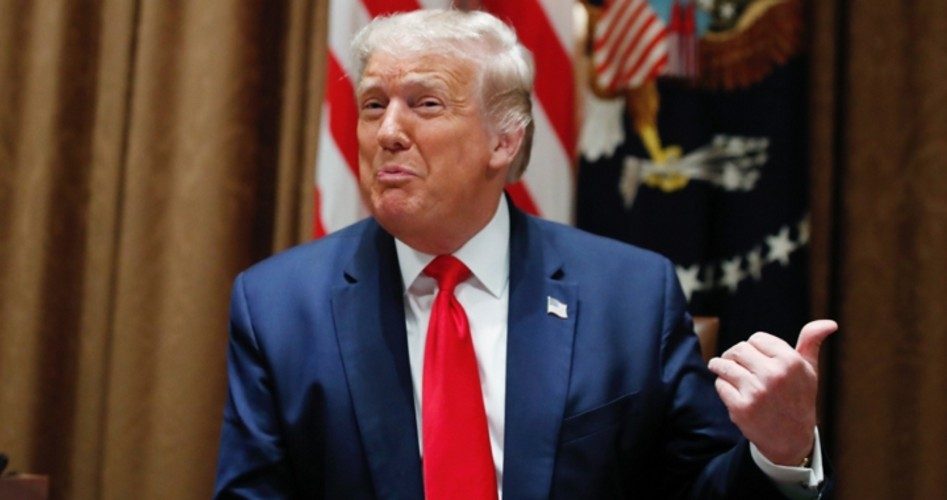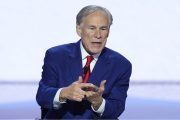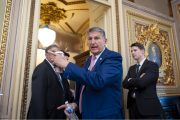
When Dante Chinni, writing for NBC News last month, said that the president’s Twitter account gives him a “direct line to voters” and “lets him drive news coverage” by the media, he missed the most important part: Every tweet is carefully crafted and deliberately intended to accomplish a specific purpose.
Trump’s former chief economist, Casey Mulligan, who served as chief economist on the White House Council of Economic Advisors, explained just how it works. His book You’re Hired! Untold Successes and Failures of a Populist President, scheduled to be released on September 3, reveals the process and the thinking behind much of the White House’s strategy on major issues of the day. And Trump’s Twitter account is a primary tool.
First, writes Mulligan, the president doesn’t do the tweeting himself. He leaves that up to Dan Scavino, who is Trump’s deputy chief of staff for communications and director of social media. Second, the president doesn’t walk around carrying an iPhone tweeting something whenever he is in the mood. Third, every tweet is reviewed by “many people” on his staff before it is released.
Every tweet is designed to focus the conversation on a specific topic or issue, says Mulligan, sometimes using exaggeration or embellishment to get the mainstream media’s attention.
Trump’s audience is enormous: He has more than 83 million followers. But more even more impressive are the numbers who report “seeing, hearing or reading about” his tweets. According to a Gallup Poll taken in 2018, three quarters of the country’s adult population said they had, which translates to about 190 million people.
Early in his administration, the president was tweeting about 160 times a month. But over time it became clear that he could get more traction, and mainstream media attention, if he exaggerated it a little bit, giving them the opportunity to criticize the president by correcting him.
Wrote Mulligan, “POTUS began with a now familiar strategy for getting the press to cover a new fact, which is to exaggerate it so that the press might enjoy correcting him and unwittingly disseminate the intended finding.”
One recent example suffices. At 6:46 a.m. July 30 the president tweeted,
With Universal Mail-in Voting (not Absentee Voting, which is good), 2020 will be the most INACCURATE & FRAUDULENT Election in history. It will be a great embarrassment to the USA. Delay the Election until people can properly, securely and safely vote???
The media poured out contempt for such a suggestion, claiming that the president was once again acting like an out-of-control tyrant, thus confirming one of the media’s main myths and canards about him.
But the president and his staff know that he doesn’t have that power, that it properly belongs to the legislative branch to make such a change. The tweet accomplished its purpose: directing his followers’ attention to the risks of mail-in voting. At 2:22 p.m. that same day, the president tweeted:
Glad I was able to get the very dishonest LameStream Media to finally start talking about the RISKS to our Democracy from dangerous Universal Mail-In-Voting (not Absentee Voting, which I totally support!).
The next day that media peppered White House press secretary Kayleigh McEnany about the issue, thus driving the discussion even further.
In other words, Trump’s tweet strategy allowed him to focus on the potential for voter fraud inherent in mail-in voting, a topic which the hapless media wouldn’t likely have been interested in covering otherwise.
Along with Trump’s increase in his tweeting comes the danger that his Twitter account will be suspended before the election. When Ben Domenech, publisher of The Federalist, interviewed the president on July 24, he asked him directly: Does the president think Twitter will ban his account before the election? The president responded, “Yes, I do. Some people say I should join Parler. Maybe. We do have over 194 million followers, though, across multiple sites.”
When Parler’s CEO John Matze was asked if Twitter was censoring “objectionable” content such as Trump’s, he said, “I think they are censoring. I don’t think they believe they are. I don’t know that they would admit they are, but it is pretty clear that they’re behaving like publications…. They’re telling you they’re an open community forum for people behaving like publications, choosing what gets to reach its audience, what doesn’t.”
At present, Parler has just three million registered users and claims to be an “unbiased social platform focused on open dialogue and user engagement. We allow free speech and do not censor ideas, political parties or ideologies.”
Until Twitter pulls the plug on the president, he will continue to use his Twitter account to focus the conversation and infuriate the mainsteam media.
Photo: AP Images
An Ivy League graduate and former investment advisor, Bob is a regular contributor to The New American, writing primarily on economics and politics. He can be reached at [email protected].



